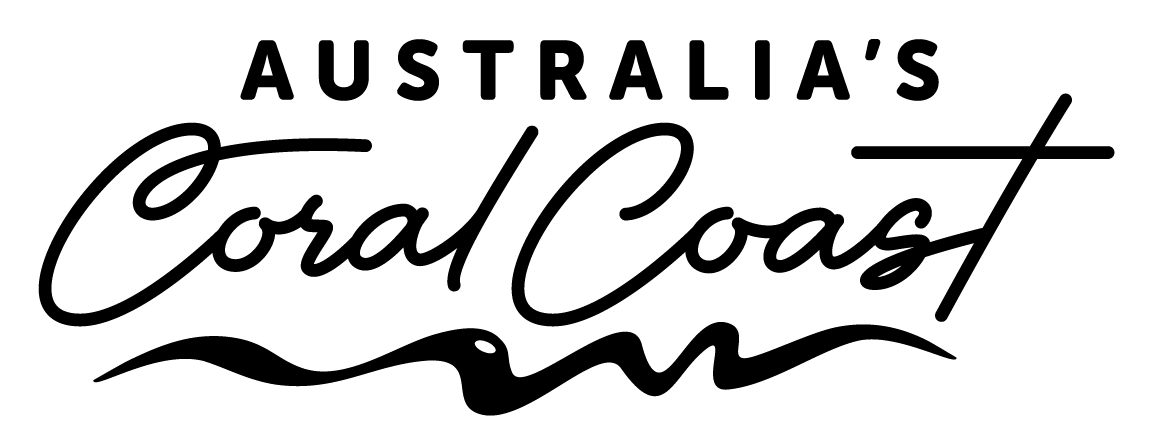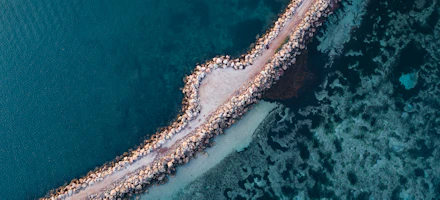
Turtles of the Coral Coast
Australia's Coral Coast is home to some of the world's most important turtle breeding grounds
The Shark Bay World Heritage Area, Ningaloo Coast World Heritage Area and the Mackerel Islands (off the northern coast of Exmouth) are all significant areas for marine turtles, including loggerhead, green, flatback and hawksbills turtles. Shark Bay alone is home to over 6,000 turtles!
Turtles can be encountered in the region year-round. Spot them popping their heads up out of the water while on a wildlife cruise or marine safari in Shark Bay; snorkel with them through the crystal clear waters of Ningaloo Reef while encountering some of the reef's 500 species of fish, 300 species of coral and abundance of other marine life; and spot them on a self-guided turtle walk at the Mackerel Islands.
From late-October through to early April the region transforms into a hub of turtle breeding as mating, nesting and hatching seasons occur. Visitors to the region should read the Turtle Watchers Code of Conduct (below) before heading to the beaches during these seasons.
Turtle Mating
Turtle mating generally commences in late-October, where they can be seen in the shallows. It's important not to disturb, swim with or interfere with mating turtles in any way - and make sure to give them plenty of space if they are resting on the beach.
Turtle Nesting
From December, female turtles can be seen making their way up the beaches to dig their nests and lay their eggs. This is a critical time for turtles, as turtles can easily become disoriented or abandon their nests if they are disturbed or startled.
Turtle Hatching
60 days after nesting, hatching occurs! As with turtle nesting, this is a critical time for turtles and it's important to give hatchlings adequate space and not interfere with them in any way.
Turtle Season Hotspots

Dirk Hartog Island
Dirk Hartog Island is home to Australia's largest breeding colony of loggerhead turtles - the world's most endangered turtle species. They can be seen nesting from the Island's aptly named Turtle Bay to Dampier's Landing, and Turtle Bay is the species' main nesting area.

Ningaloo Coast World Heritage Area
The Ningaloo Coast is recognised as one of the world's most important nesting grounds for both green and loggerhead turtles. Key locations include Point Quobba (Carnarvon), Maud's Landing (Coral Bay) and the Jurabi Coastal Reserves (Exmouth). Exmouth's Jurabi Turtle Centre is one of the best places for a turtle experience, with dedicated night time turtle eco-education tours run by Park Rangers between December and March.

Mackerel Islands
Located off the northern coast of Exmouth, the Mackerel Islands are a gazetted nature reserve and a turtle hotspot. Flatback, hawksbill, loggerhead and green turtles can all be seen nesting and hatching on Thevenard Island, one of the 10 island atolls, between December and March.
Turtle Watcher's Code of Conduct
The Code of Conduct will guide you on how to get the best opportunity to watch turtles during breeding season without disturbing their activity. The most important things to remember when you sight nesting and hatching is "no glow, move slow, stay low".
Nesting:
Turtles are at various risk levels from disturbance during their nesting process, but you should be mindful not to interfere with or disturb them during any stage. Here is everything you need to know about each nesting stage and how you can best protect them during this critical time in the breeding cycle.
| Nesting stage | How to identify | Time | Vulnerability to disturbance | Torch Use | Distance from Turtle |
| 1. Emerging from water | The turtle crawls from the ocean towards the sand dunes | Between 5 - 20 minutes | High | No | Stay still and at least 15 metres away from the turtle. |
| 2. Digging her nest | The turtle uses her front flippers to dig her nest, tossing large quantities of sand behind her | Between 20 - 40 minutes | High | No | Stay still and at least 15 metres away from the turte - if you are getting hit by sand, you are too close! |
| 3. Excavating the nest | The turtle uses her rear flippers and will be rocking as she digs | Between 10 - 20 minutes | Medium | No | A maximum of 3 people at a time may slowly approach the turtle from behind, but must stay at least 1 metre behind her. |
| 4. Egg laying | The turtle will be very still with a gentle heaving motion | Between 3 - 10 minutes | Low | Yes, but only from behind if you stay low and remain partially covered at least 1 metre away from the rear of the turtle | Stay at least 1 metre behind the turtle. |
| 5. Covering and camouflaging the nest | The turtle will cover the nest and compact the sand with her rear flippers, before slowly moving forward while tossing large quantities of sand behind her with her front flippers | Between 20 - 40 minutes | Low | No | Stay still and at least 2 metres behind the turtle. |
| 6. Returning to the ocean | The turtle will crawl from the sand dunes back to the ocean | Between 5 - 10 minutes | Low | No | Remain at least 2 metres behind the turtle at all times. |
Hatching:
Turtle hatchlings are particularly vulnerable, and it is important that we minimise our impact on them to avoid causing stress. When viewing turtle hatchlings, make sure to:
- Never touch or handle hatchlings
- Never use any form of light or flash photography - this will disturb and disorientate the hatchlings, exposing them to a greater risk of predation or causing them to divert from their route to the ocean and become stranded on the beach.
- Never disturb the nest
- Never compact the sand, as there may still be hatchlings waiting to emerge from the nest
- Never illuminate the hatchlings in the water
- Never drive your vehicle on turtle nesting beaches, as you risk trapping hatchlings in wheel ruts
- Always stand at least 1 metre away from the nest
- Always stand still when hatchlings are making their way down the beach, to avoid stepping on them or scaring them
- Always allow hatchlings to make their way to the ocean without assistance or disturbance. Allowing hatchlings to make their own way to the water using their flippers helps them to exercise their lungs, which in turn allows them to swim and dive when they reach the water
- Always remain behind the hatchlings at all times
The best way to experience nesting and hatching turtles is on tour with a local. Exmouth's Jurabi Turtle Centre is one of the best places for this experience, with guided nighttime eco-eduational tours run by Park Rangers between December and March.






































